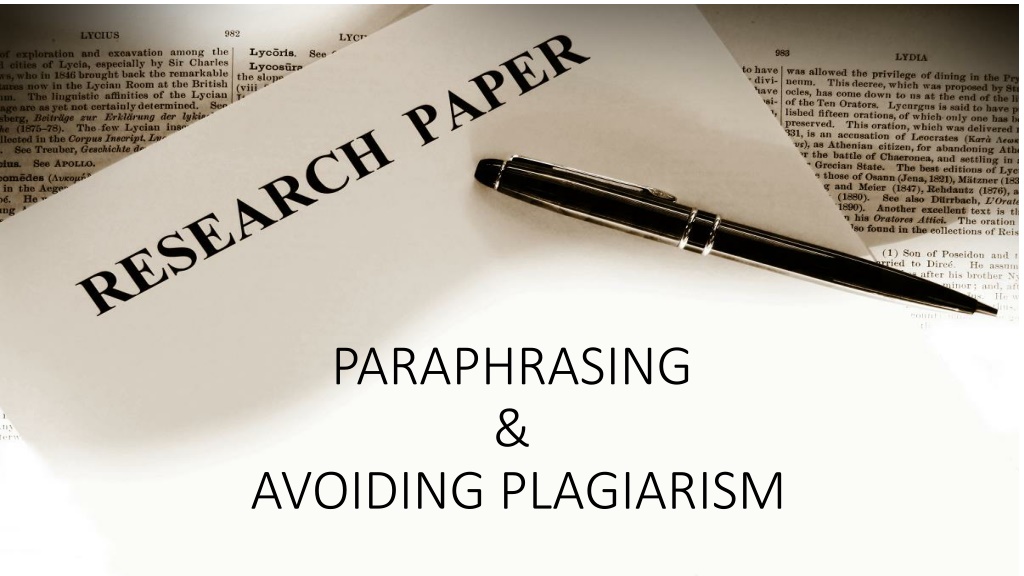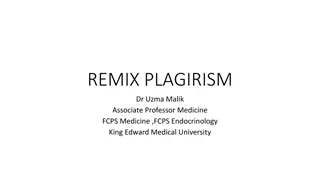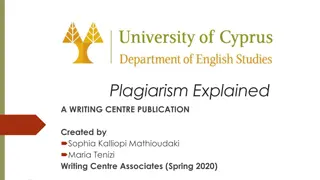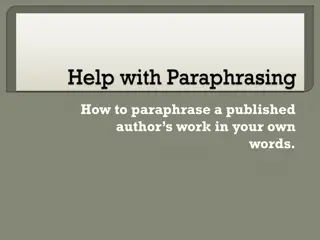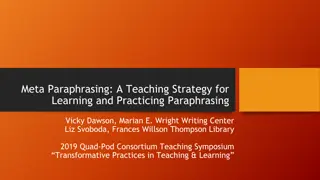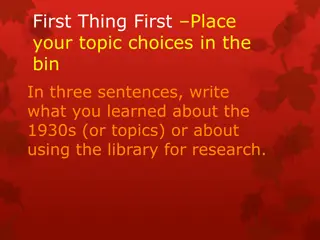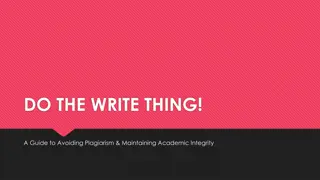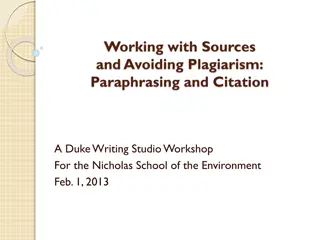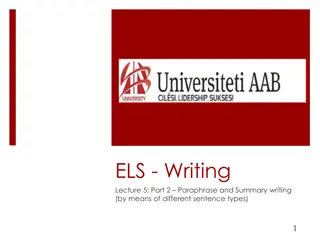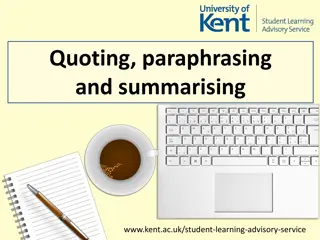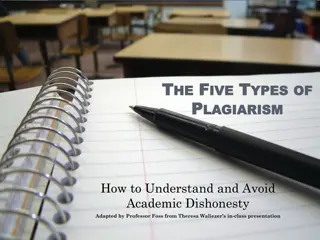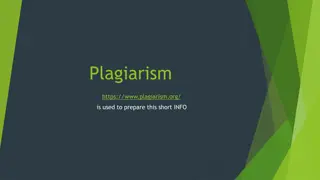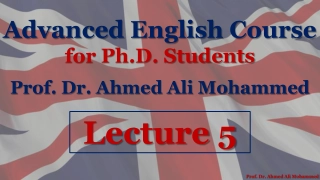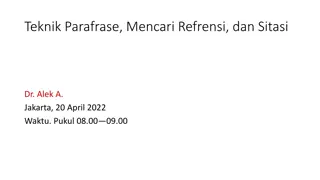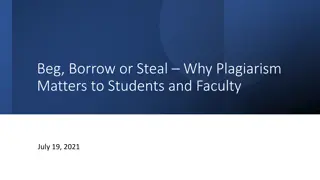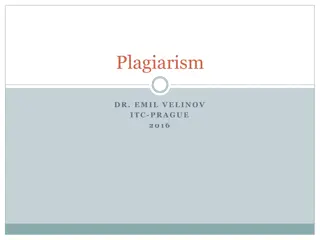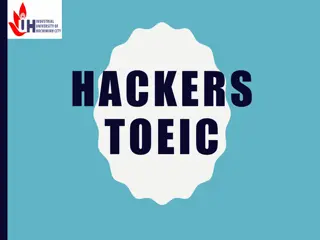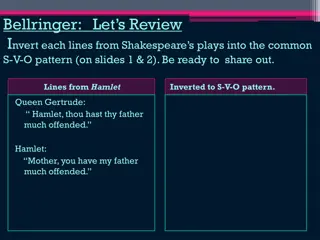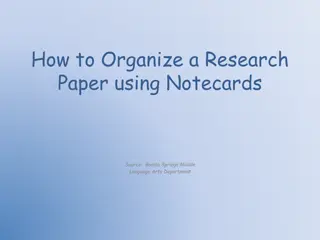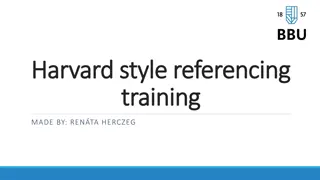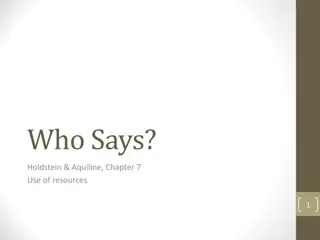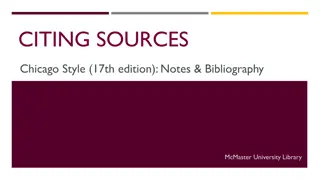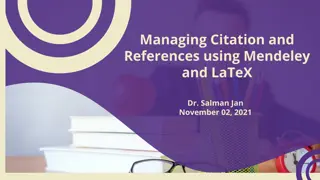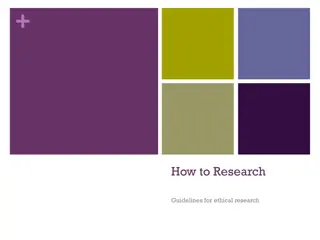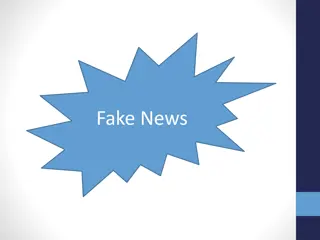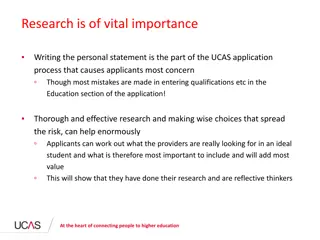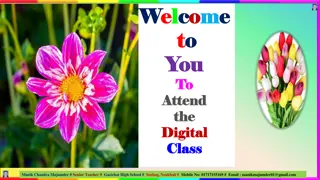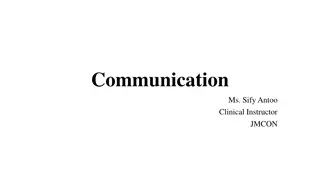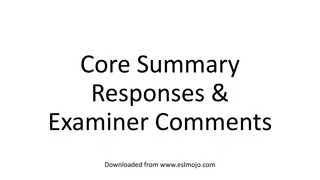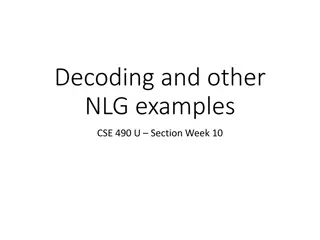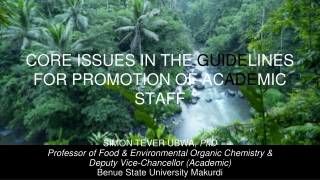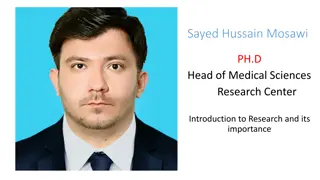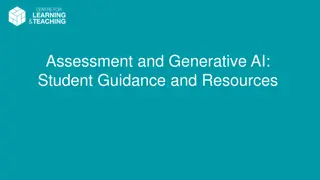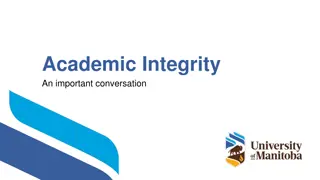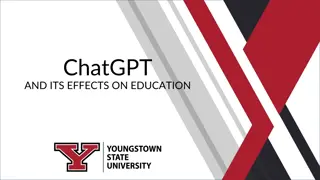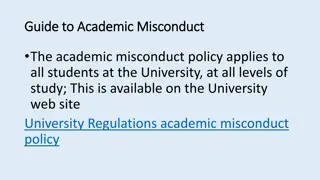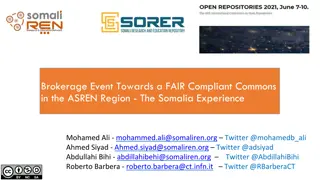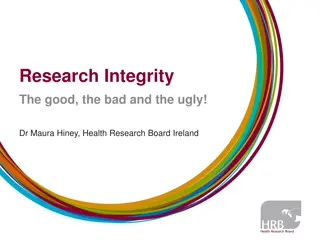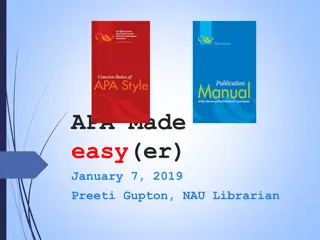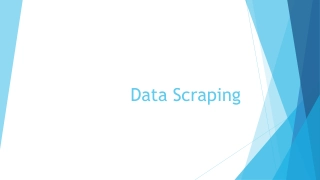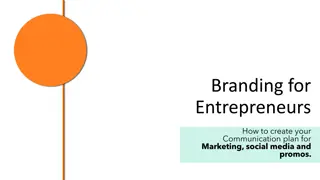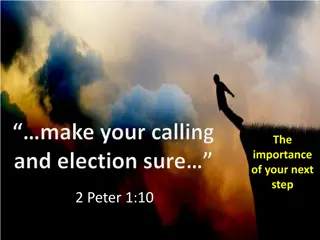Mastering Paraphrasing to Avoid Plagiarism
Paraphrasing is a valuable skill that allows writers to express ideas in their own words while giving credit to original sources. By following specific steps and practicing examples, one can effectively paraphrase complex information and enhance understanding. The process helps in retaining the essence of the original content without copying directly, enabling writing in a personal and engaging voice.
Download Presentation

Please find below an Image/Link to download the presentation.
The content on the website is provided AS IS for your information and personal use only. It may not be sold, licensed, or shared on other websites without obtaining consent from the author. Download presentation by click this link. If you encounter any issues during the download, it is possible that the publisher has removed the file from their server.
E N D
Presentation Transcript
PARAPHRASING & AVOIDING PLAGIARISM
PARAPHRASE: WRITE IT IN YOUR OWN WORDS One legitimate way, WHEN ACCOMPANIED BY ACCURATE DOCUMENTATION, to borrow from a source A more detailed restatement than a summary, which focuses on a single main idea
WHY IS PARAPHRASING A VALUABLE SKILL. It is better than quoting information from an undistinguished passage. You are writing the paper in YOUR VOICE! It helps control the temptation from quoting too much. It s BORING to read a paper of direct quotes! The paraphrasing process helps you grasp the full meaning of the original. You need to think about it!
A FEW QUESTIONS: Writers paraphrase to a. allow for their own voice to shine through in their writing. b. fix poor writing of the original copy. c. just because. Paraphrasing is an important skill because a. It s better that quoting from a undistinguished piece of writing. b. It helps you from quoting too much. c. It helps the writer better understand the material. d. All of the above Writers give credit to their sources when paraphrasing an author s ideas.. a. Always b. Sometimes c. Never
6 STEPS TO EFFECTIVE PARAPHRASING: 1. Reread the original until you understand the full meaning. This means looking up words that you don t know! 2. Set the original aside. Write your paraphrase on a note card or document. 3. Jot down a few words below your paraphrase to remind you how you want to use the text. At the top of the card or page, write the subtopic of the paraphrase. 4. Check to make sure your paraphrase accurately expresses the essential information in the original. 5. Use quotation marks to identify any unique term or phrase you have borrowed exactly from the source. 6. Record the source, including the page on your notecard or page so that you can credit it easily if you decide to use it in your paper.
LETS PRACTICE: Example: The automobile is chartreuse. Reread. Identify and words you don t know. Rewrite in your own words. Make sure the meaning is the same as the original. Possible Answer: The car is green. Example: Preparations for the ceremony were elaborate. Reread. Identify and words you don t know. Rewrite in your own words. Make sure the meaning is the same as the original. Possible Answer:
THIS ONE IS A LITTLE MORE COMPLEX: Of the more than 1,000 bicycle deaths each year, three-fourths are caused by head injuries. Half of those killed are school-age children. One study concluded that wearing a bike helmet can reduce the risk of head injury 85 percent. In an accident, a bike helmet absorbs the shock and cushions the head. Strategies: Reread. Identify and words you don t know. Rewrite in your own words. Make sure the meaning is the same as the original. Give credit. Source: Bike Helmets: Unused Lifesavers, Consumer Reports (May 1990): 348
POSSIBLE ANSWER: The use of a helmet is the key to reducing bicycling fatalities, which are due to head injuries most of the time. By cushioning the head upon impact, a helmet can reduce accidental injury by as much as 85%, saving the lives of hundreds of victims annually, half of whom are school-aged children.( Bike Helmets 348). Try this one: While the Sears Tower is arguably the greatest achievement in skyscraper engineering so far, it s unlikely that architects and engineers have abandoned the quest for the world s tallest building. The question is: Just how high can a building go? Structural engineer William LeMessurier has designed a skyscraper nearly one- half mile high, twice as tall as the Sears Tower. And architect Robert Sobel claims that existing technology could produce a 500-story building. Source: Ron Bachman, Reaching for the Sky. Dial (May 1990): 15
PLAGIARISM What is it? Buying, stealing or borrowing a paper (including of course copying an entire paper or article from the Web) Hiring someone to write your paper Copying large sections of text from a source without quotation marks or proper citation
When do we give credit? The key to avoiding plagiarism is to make sure you GIVE CREDIT where it is due. This may be credit for something somebody said, wrote, emailed, drew, or implied. These include: words or ideas presented in a magazine, book, newspaper, song, TV program, movie, Web page, computer program, letter, advertisement, or any other medium. Information you gain through interviewing or conversing with another person, face to face, over the phone, or in writing When you copy the exact words or a unique phrase When you reprint any diagrams, illustrations, charts, pictures, or other visual materials When you reuse or repost any electronically-available media, including images, audio, video, or other media Bottom line, document any words, ideas, or other productions that originate somewhere outside of you.
What Doesnt Need Documentation: Writing your own lived experiences, your own observations and insights, your own thoughts, and your own conclusions about a subject When you are writing up your own results obtained through lab or field experiments When you use your own artwork, digital photographs, video, audio, etc. When you are using "common knowledge," things like folklore, common sense observations, myths, urban legends, and historical events (but not historical documents) When you are using generally-accepted facts, e.g., pollution is bad for the environment, including facts that are accepted within particular discourse communities, e.g., in the field of composition studies, "writing is a process" is a generally-accepted fact.
HOW TO AVOID PLAGAIRISM: Good Note-taking * Mark someone else s ideas with a Q for Quote, S for source, ME for your own ideas * Record information for each source Writing Direct Quotes * Keep the source author s name in the same sentence as the quote. * Use quotation marks Writing about Another s Ideas * Note the name of the idea s originator in the sentence or throughout a paragraph about the idea * Use quotation marks around key phrases or words that the idea s originator used Revising, Proofreading, and Finalizing Paper Proofread and crosscheck your notes and sources for * In-text citation * works cited page * quotations around direct quotes * crediting paraphrased and summarized text * If you have a question, ask for help IN ADVANCE.
IS IT PLAGIARISM? I find it ridiculous that 57% of all high school students think their teachers assign too much homework. Americans are guaranteed the right to freely gather for peaceful meetings. Americans want to create a more perfect union; they also want to establish justice, ensure domestic tranquility, provide for the common defense, promote the general welfare, and secure the blessing of liberty for everybody. My friend Kara told me that she loves living so close to the ocean.
